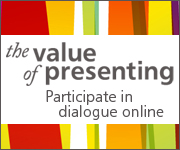Or in plain language: what are 4G speeds on LTE networks which started to come online in Canada in 2012 going to enable for theatre goers and dance attendees as well as presenters and producing companies?
During the first year of conducting Value of Presenting workshops there was little appetite to consider anything but the utility of social media in selling tickets. A breakthrough happened at the CAPACOA conference in January 2013 and now it feels like more and more presenters are beginning to see that web-based mobile technologies are going to create leaps in value for audiences and perhaps artists, producers and presenters. We presented at the Creative City Summit in Ottawa in May 2013 what we found out from Canadians and presenters about their use and attitudes to digital technologies and how Canadians’ views of what “live” means to them might be evolving.
At APAP|NYC we presented on this topic (PDF) this month as well and just last week the 2014 CAPAOCA conference featured a successful workshop with presenters on the opportunities, the values of both streamed and live experiences, facilitated by Frederic Julien from CAPACOA.
Watch this Youtube video by Alcatel-Lucent which was created in 2009 (!) to demonstrate their technology vision and emerging capabilities. The final minute shows a vision of a performing arts experience, begging for a presenting business model!
What will the successful strategic move look like?






